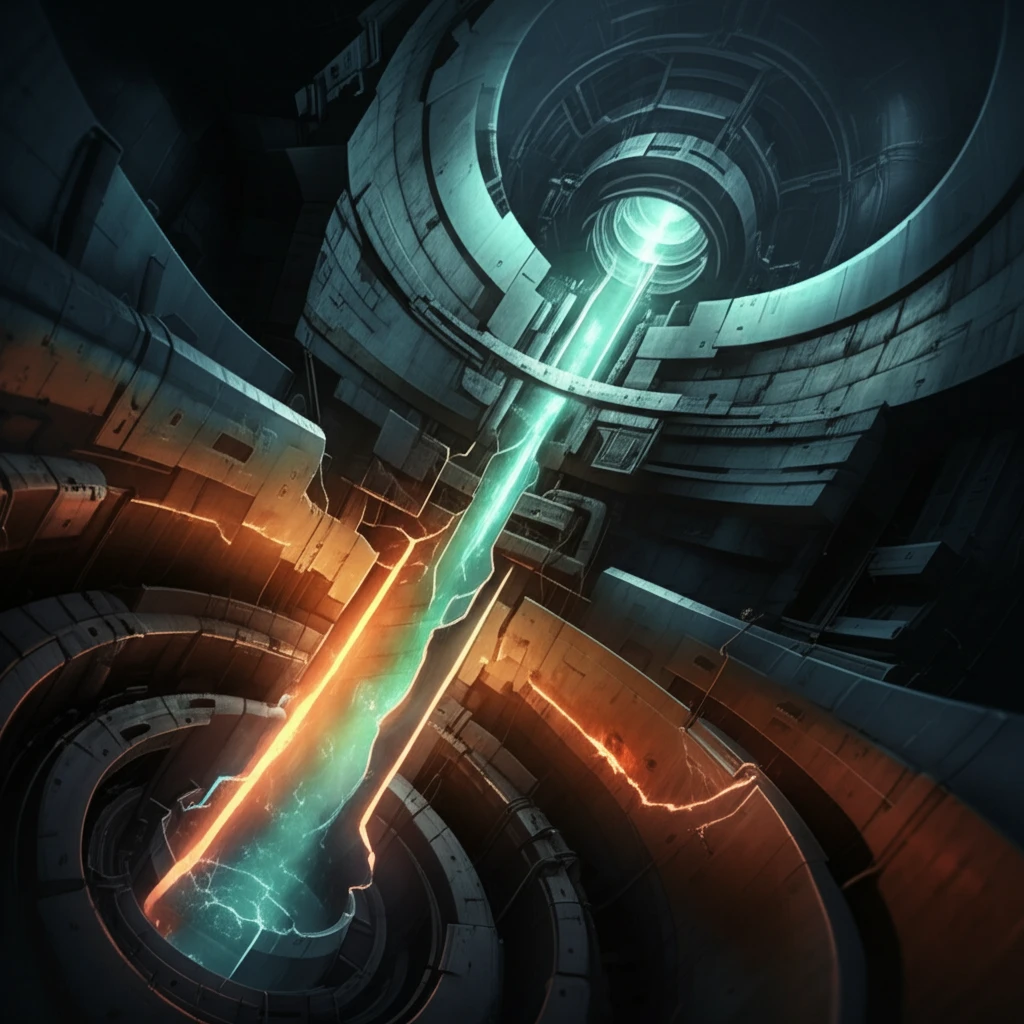
Cracks in Nuclear Reactors: Are We Heading for a Meltdown?
"Understanding the Science Behind Steam Generator Tube Failures and What It Means for the Future of Nuclear Energy."
Nuclear power plants are the backbone of energy production for many countries, but their safe and efficient operation is paramount. At the heart of these plants are steam generators, critical components responsible for transferring heat from the nuclear reactor core to produce steam, which then drives turbines to generate electricity. However, these generators are constantly under stress, facing a relentless barrage of challenges that can compromise their integrity.
One of the most significant threats to steam generator longevity is flow-induced vibration (FIV). This phenomenon occurs when the flow of fluid, whether water or steam, causes the tubes within the generator to vibrate. While some vibration is inevitable, excessive FIV can lead to premature wear, fatigue, and, most alarmingly, the development of cracks in the tubes. These cracks can potentially leak radioactive heavy water, posing a serious environmental and health hazard.
Recent research has focused on understanding and predicting crack growth in steam generator tubes subjected to FIV. Scientists are using sophisticated computer models and simulations to assess the factors that contribute to crack formation and propagation, including the effects of tube support clearances, fluid forces, and material properties. The goal is to develop strategies to mitigate FIV, prevent crack formation, and ensure the continued safe operation of nuclear power plants.
What Causes Cracks in Nuclear Steam Generators?

The primary culprits behind FIV in steam generators are turbulence and fluidelastic instability. Turbulence, characterized by chaotic changes in pressure and flow velocity, creates random vibrations. Fluidelastic instability, on the other hand, is a more organized phenomenon that occurs when the interaction between fluid flow and tube motion reaches a critical threshold, leading to large-amplitude vibrations.
- Turbulence: Random, low-amplitude vibrations caused by chaotic fluid flow.
- Vortex Shedding: A periodic excitation related to the flow velocity and structural resonance.
- Fluidelastic Instability: A self-excited phenomenon causing large vibrations once a critical velocity is reached.
The Future of Nuclear Safety: Proactive Prevention and Continuous Monitoring
The ongoing research into crack growth prediction and leakage potential in steam generators is crucial for ensuring the long-term safety and reliability of nuclear power plants. By employing advanced modeling techniques and probabilistic assessments, engineers can better understand the factors that contribute to tube failure and develop strategies to mitigate these risks. Continuous monitoring, proactive maintenance, and robust safety protocols are essential for preventing radioactive leakage and safeguarding the environment and public health. After all, ensuring a safe nuclear power industry will remain a critical consideration for decades to come.
